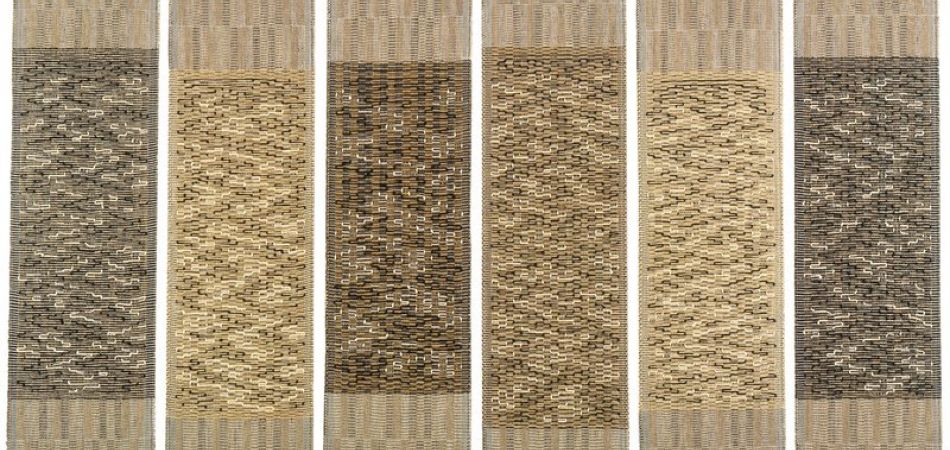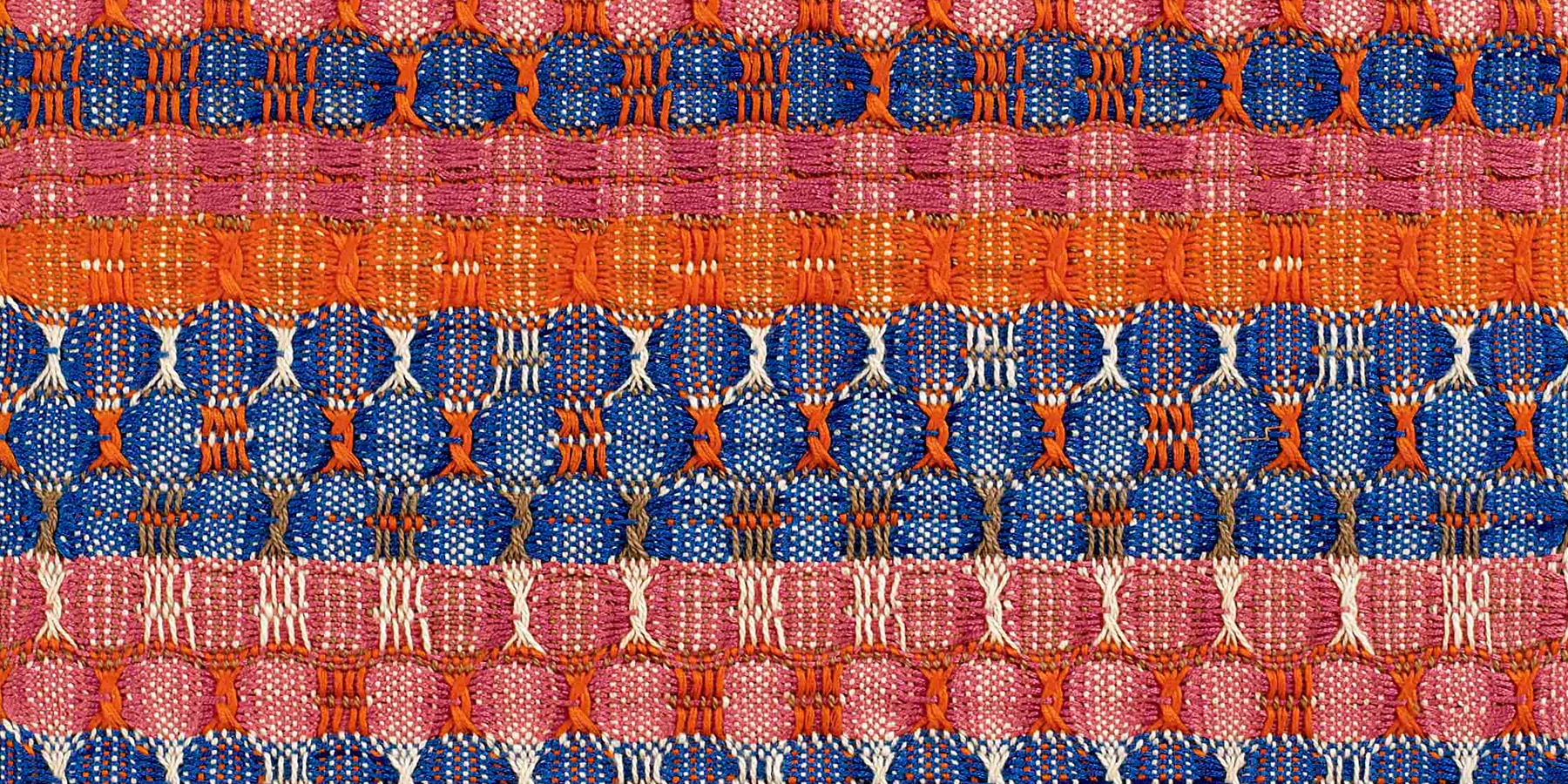Wandering around this kaleidoscopic exhibition at the Tate put me in mind of so many other artists that I began to wonder whether Albers was a conduit for their influence or whether I was simply engaged in a procession of imagined serendipity.
It may seem strange to begin with a sculptor given that Albers primarily worked with textiles but I was constantly reminded of Brancusi. The wonder of Brancusi is that he aims to reveal and develop the inherent nature of the material whether stone, wood or metal. The form that he finds is therefore perfectly suited to the stuff with which he is working.
What is striking with Albers is that she does exactly this with the techniques applied to different types of material. Development In Rose (one of my favourite pieces in the exhibition) is made from linen and the impurities and imperfections in the thread are used in essence as highlights. The slightly muted colour also captures the often slightly faded nature of the linen palette.
This is later conceptualised as the ‘event of the thread’ particularly through the use of knots and free lines using brocading - a technique that allows for improvisation because it allows thread to be added over the basic weave. As she said: ‘The thoughts … can, I believe, be traced back to the event of a thread'. So strong is the emphasis on the tactile that this is close to sculpting with the material.
The frequency with which alarms went off in the exhibition because people were keen to be closer to and in fact wanted to touch and feel the exhibits is a testament to the supremely attractive quality of the combination of material, colour and weave. When seen up close the effect is utterly compelling.
The second major influence - and likely a direct influence given that both attended the Bauhaus at the same time - is Paul Klee. The use of small colour blocks (see above) is very reminiscent of the approach used by Klee to capture light fractured into tiny pieces in a vast environment such as a desert.
Then there is Robert Delaunay in the use and development of colour theory and the representation of the colour spectrum. Looking at 'Sunny' (below) by Albers reminded me very strongly of Delaunay pieces seeing to represent the way that light, particularly strong sunlight, refracts into different colours.
Other pieces with stronger abstract patterns deliberately place colours in relation to each other given their position on the spectrum. Colour Studies not surprisingly gives effect to this .....
Albers also achieves a remarkably immersive quality. The extraordinary Torah scrolls have almost a 3D effect when stared at for some time; the pieces simultaneously move towards the viewer and drag the viewer in akin to the effect of a monumental Rothko. They also share the characteristic of being explicitly architectural in that, as was often the case for Rothko, the pieces were designed for a particular space and were an opportunity for Albers to give effect to her ideas about the role of textiles as part of broader architectural design.
But there are some aspects of Albers that seem wholly sui genesis bringing together in extraordinary effect motifs to which she seems to return constantly. In Red and Blue Layers she has fashioned cotton knots which resemble the wheatsheaf interspersed with verticals in a completely beguiling and endlessly fascinating combination which seems at once centuries old (it certainly reminded me of 17th century fabric design) and completely new. Given that I could happily stare at this for hours why not do just that .....
Many of Albers' more regular pattern designs now looks as though they come from a catalogue. There's a reason for that. She has been so enormously influential that we now don't fully realise the extent to which her work has imbued so much of what we see and experience. However, what a catalogue most certainly cannot capture is the desire, as with the best sculpture, to set off those alarms and hold the material in your own hands.





Great photos - capture it beautifully. With a slight exception for the Torah prayer scrolls, which (I found, too) were not really possible to capture in a photo. There was something about the play of light on the metallic threads that was like sunlight on water, mesmerising. It gets flattened to shades of beige in any photo.
ReplyDeleteLED is not the answer!
ReplyDelete